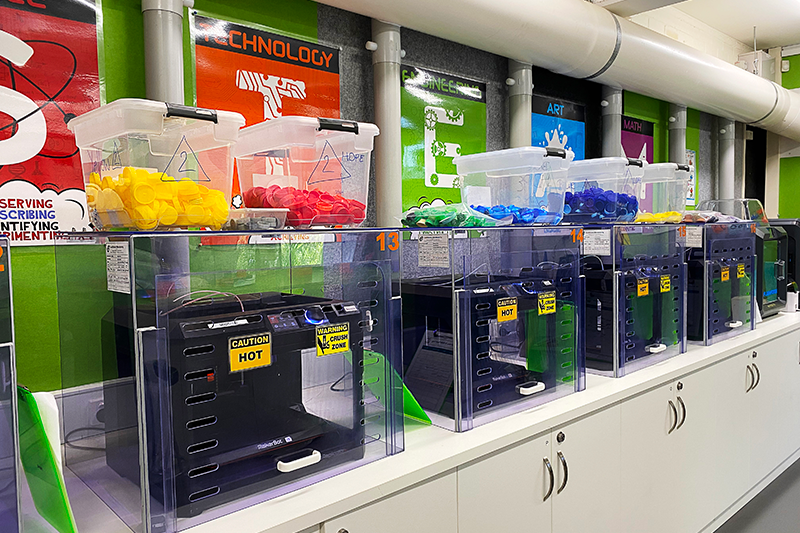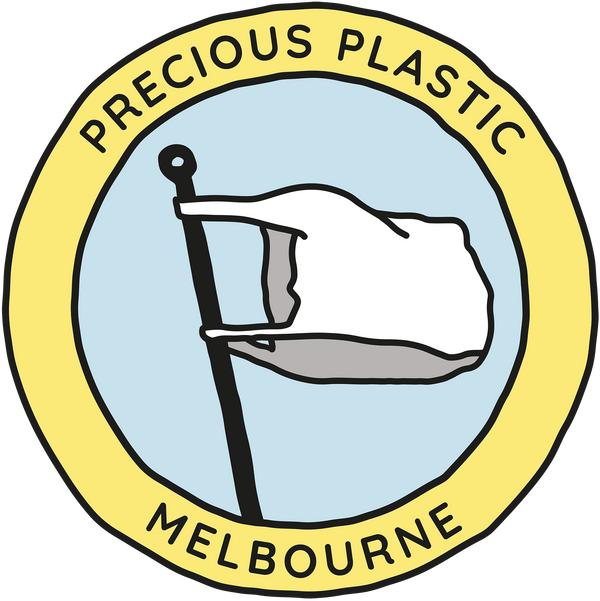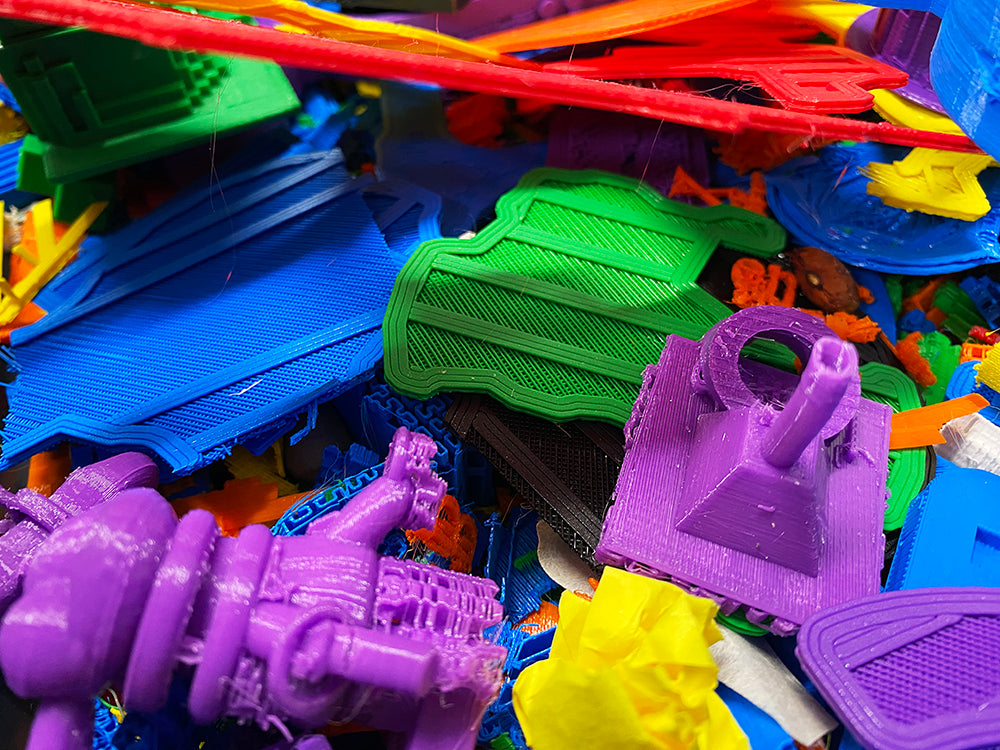3D printing is a rapidly growing technology that has the potential to revolutionise manufacturing. However, the use of plastic in 3D printing is a major environmental challenge. In fact, the global 3D printing market is expected to reach $45.8 billion by 2025, and the use of plastic in 3D printing is estimated to account for 10% of the total plastic waste generated by the manufacturing industry.
This means that as 3D printing becomes more widespread, it is critical to consider the lifecycle of 3D printer filament, with the aim of responsible solutions for the product end-of-life. This includes finding ways to recycle 3D printer filament more effectively, and using more sustainable materials in the production of filament.
In this blog post, we'll discuss how to recycle 3D printer filament, why we should recycle it, and other possible environmentally-positive outcomes for 3D printer waste.

Benefits of recycling 3D printer filament
Recycling 3D printer waste is (of course) a great way to reduce the environmental impact of 3D printing. In short, the key benefits to recycling 3D printer filament are:
- It helps to reduce the amount of plastic waste that ends up in landfill.
- It conserves natural resources (think fossil fuels).
- And it reduces the need for new plastic production, which of course helps to reduce greenhouse gas emissions.
As mentioned, it's important to keep end-of-life in mind when purchasing your 3D printer filament, particularly as it cannot be recycled within the kerbside waste stream.

Why 3D printer filament can't be recycled through your home recycling bin
Unfortunately for us, Australian kerbside recycling programs don't accept 3D printing materials. As the filament is classified under the Resin Identifier Code (RIC) as Type 7, 'Other' plastic, you can’t just throw them in your home recycling bin.
So what exactly is 3D printing filament made from? The type of filament used for a particular project generally depends on the desired properties of the finished object - below we've listed a few of the many types of plastic that can be used for 3D printing filament:
- PLA (Polylactic Acid) - A biodegradable (but not compostable) plastic. Relatively easy material to print with and produces low fumes, however can be quite brittle.
- ABS (Acrylonitrile Butadiene Styrene) - A more durable heat and impact resistant plastic. Easier to print with than some other plastics, but it produces fumes that can be harmful to breathe in.
- PETG (Polyethylene Terephthalate Glycol) - A newer type of plastic that is a blend of PET and glycol. It is stronger than PLA, and has better heat resistance than ABS. It is also easier to print with than ABS and produces no fumes when printing.
- Nylon - A strong and durable plastic that is also resistant to heat and chemicals. Often used for printing functional parts that need to withstand wear and tear, however can be difficult to print with and requires a heated bed.
- TPU (Thermoplastic Polyurethane) - A flexible plastic often used for printing objects that need to be soft and elastic. Resistant to abrasion and chemicals, however can be difficult to print with and requires a heated bed.

Can 3D printer waste be turned into more filament?
The recycling of 3D printer waste into new filament is a challenging and complex process. Through our own research and development projects, we have found that the quality of recycled filament can be inconsistent and often does not meet the same standards as virgin filament. This can lead to poor print quality and a lack of commercial viability.
There are a number of factors that can contribute to the poor quality of recycled filament, including the type of plastic used, the contamination of the waste, and the recycling process itself. Additionally, the cost of recycling 3D printer waste can be high, which can make it difficult to find a financially viable solution.
Despite the challenges, there are a number of companies working to develop more efficient and cost-effective ways to recycle 3D printer waste. As the technology continues to develop, we hope that closed-loop solutions for 3D printer waste will become more common and affordable.

How & where to recycle your 3D printer filament and failed prints
We recommend contacting your local council for advice regarding local facilities that accept 3D printer waste for recycling. In saying this, it's important to be aware that many businesses are waste brokers - 'collectors', rather than recyclers - and often it can be difficult to know what exactly the outcomes are for the collected waste streams.
Another option is to recycle the filament yourself. Whilst filament to filament is incredibly tricky, many of the schools and community groups using our micro-recycling machines are turning their 3D printer scrap into other useful items, such as pens and jenga blocks.
Which leads us to...
How to recycle your own 3D printer filament
Before you start recycling your 3D printer filament, it is important to familiarise yourself with the types of plastics you will be working with. Some filaments are made from materials that produce harmful fumes, so it is critical to take the necessary safety precautions. Check out our handy free downloadable resources and academy for more information on plastic identification and safety.
The process:
- Assess the safety requirements of the material. When purchasing new filament, be sure to choose a material that can be safely reprocessed.
- Cut larger bits into a more workable size. This will make it easier to shred the plastic.
- Shred the plastic using a granulator or shredder. Depending on the desired application, you may need to feed the plastic through a second time if a smaller flake size is required.
- Melt the plastic in an extruder or injector. The plastic is pushed through the barrel and into a product mould.
- Remove mould and unbolt it. Then open to reveal your product.
- Remove the sprue or any flashing. Set aside for shredding so that they can be returned to the material cycle.

How to make 3D printed product moulds for injection moulding
Whilst this certainly is possible, we're still working on perfecting the best method for creating a 3D printed product mould for use with micro-recycling machinery.
In the meantime, here are the basic steps involved in making a product mould using a 3D printer:
- Design the mould: This can be done using a 3D CAD software program.
- Prepare the 3D printer: The 3D printer needs to be properly prepared for printing the mould. This includes calibrating the printer, and setting the appropriate print settings. We also suggest using a high-quality 3D printer with a good resolution - this will ensure that the mould is accurate and detailed.
- Print the mould: The mould can then be printed using the desired 3D printing material. You'll need to use a material that is compatible with the product that you are making - this will ensure that the mould is durable and will not warp or crack.
- Finish the mould: The mould may require some hand-finishing, such as sanding, priming, and painting.
- Use the mould: The mould can then be used to make the product.

In conclusion!
The technology for recycling 3D printer filament into new filament is still in its early stages and is not yet commercially available. However, there are a number of micro-recycling machines that can be used to turn 3D printer waste into other useful items - this is a great alternative for those who are looking for a responsible solution for their 3D printer waste.
Either way, it's important that we continue to explore solutions to this growing waste problem. And if you've found a way to reduce the impact of your 3D printer, we'd love to you to share by leaving a comment below!


